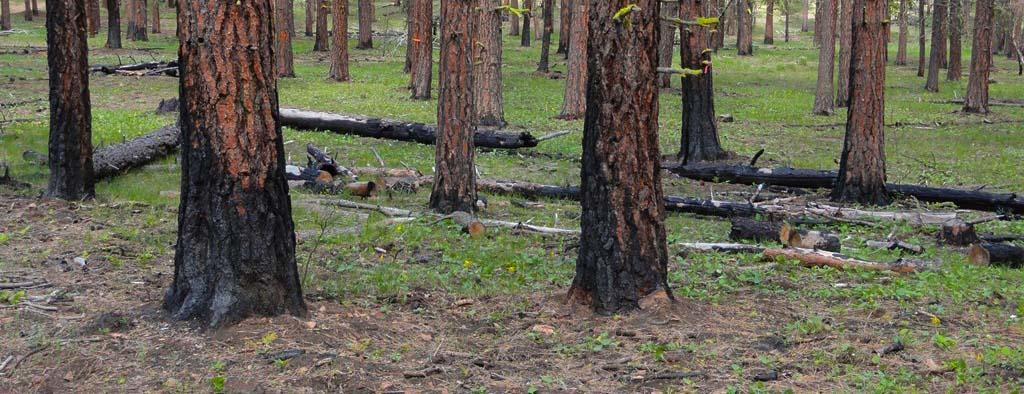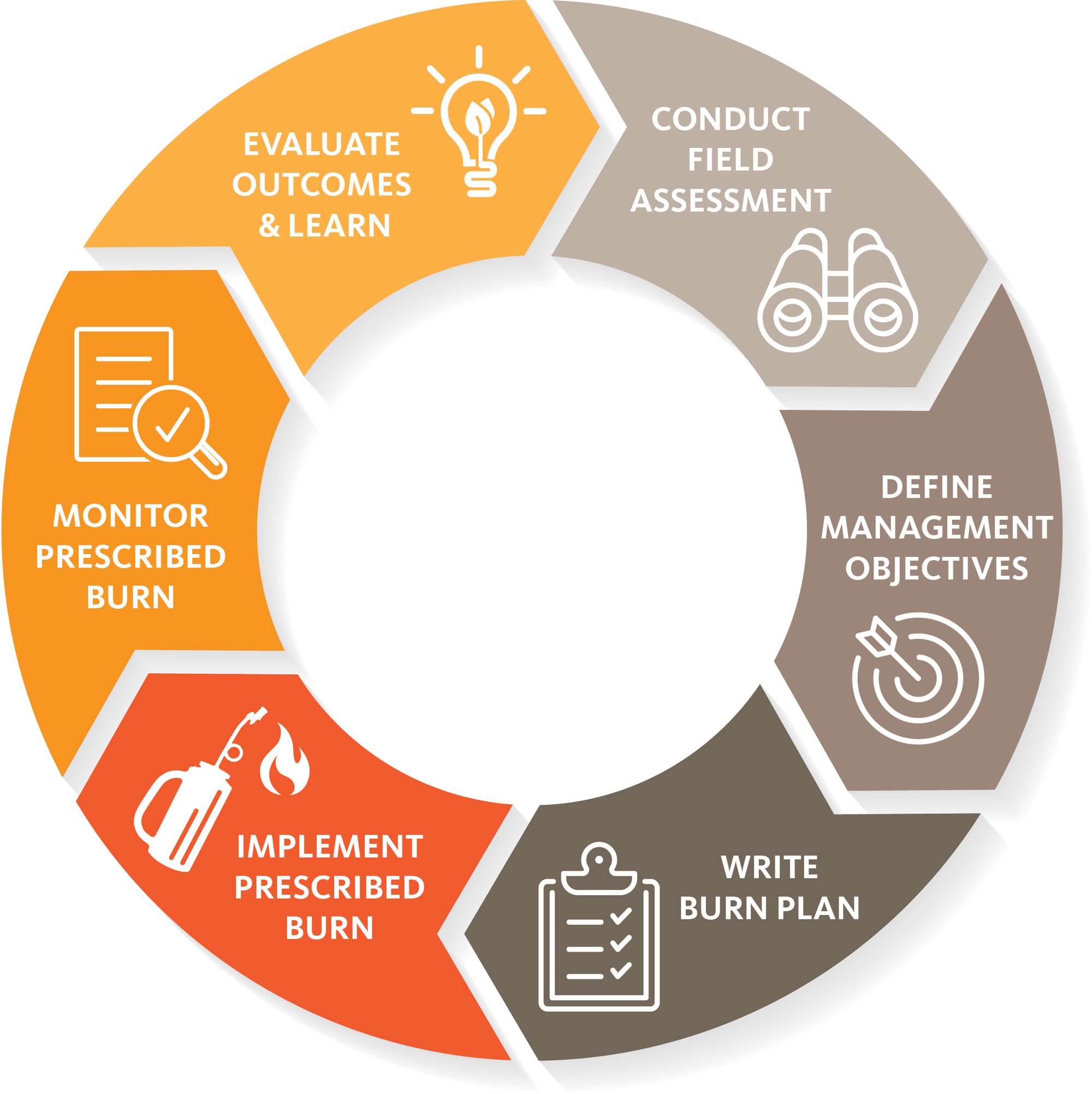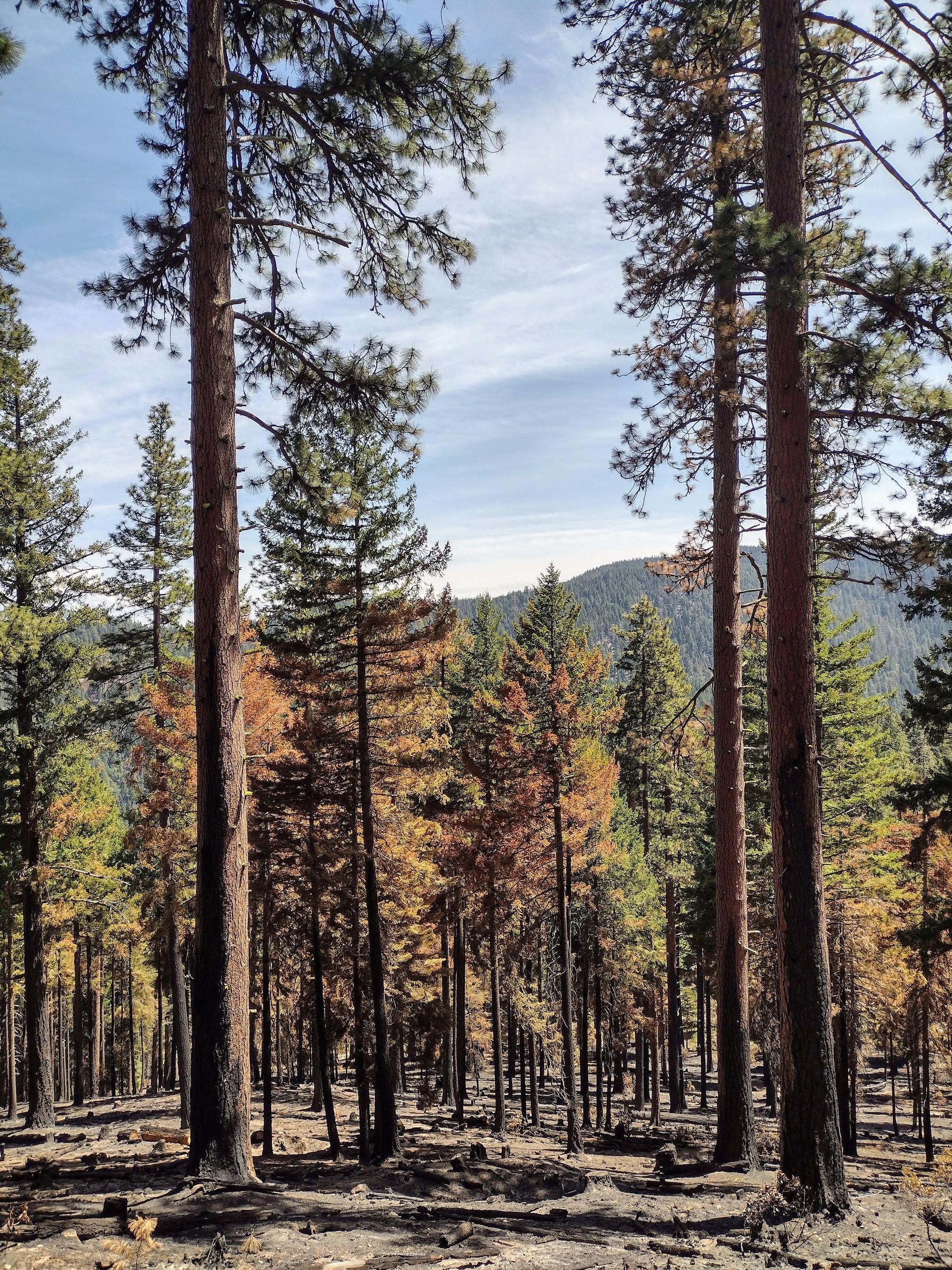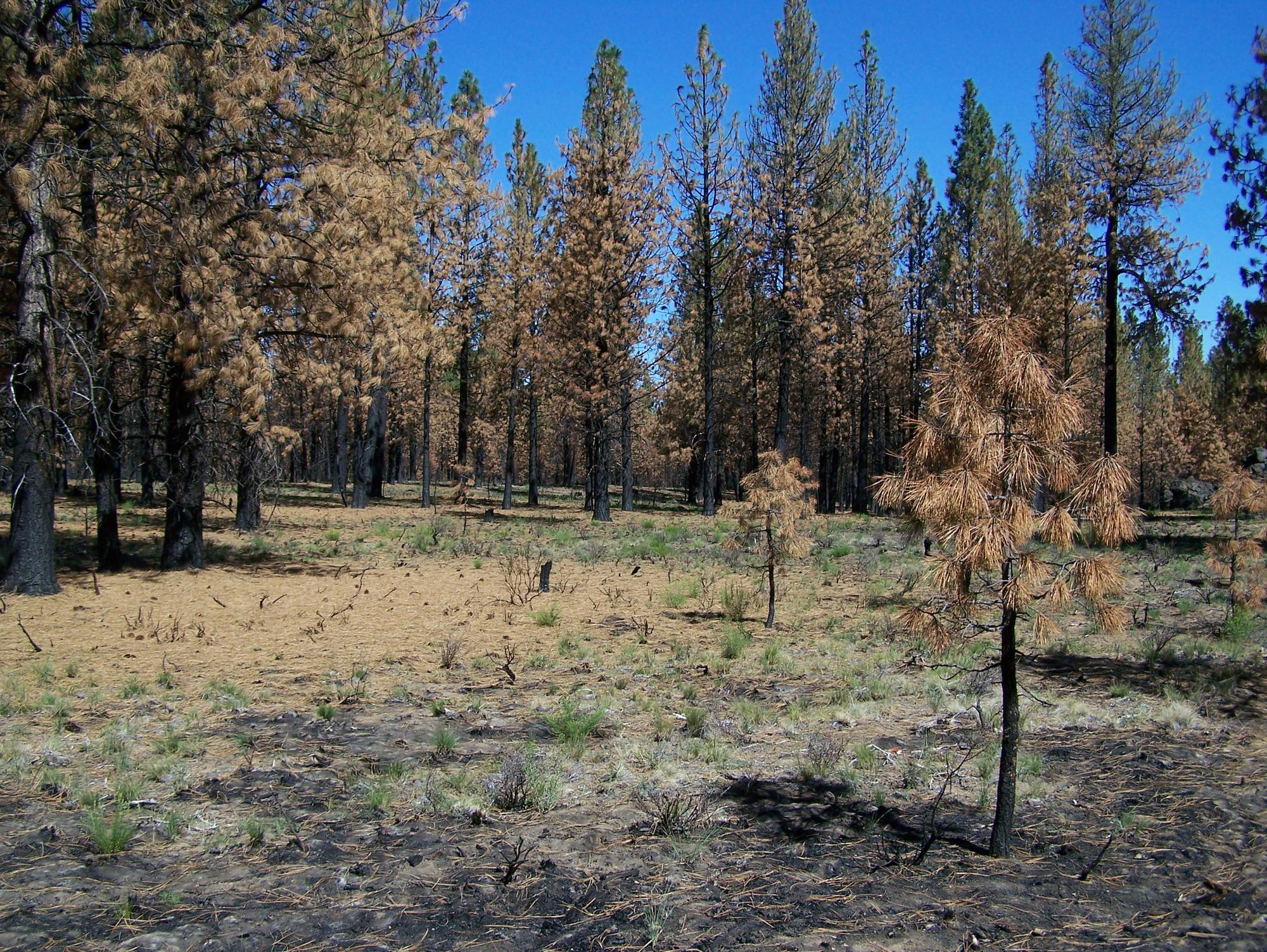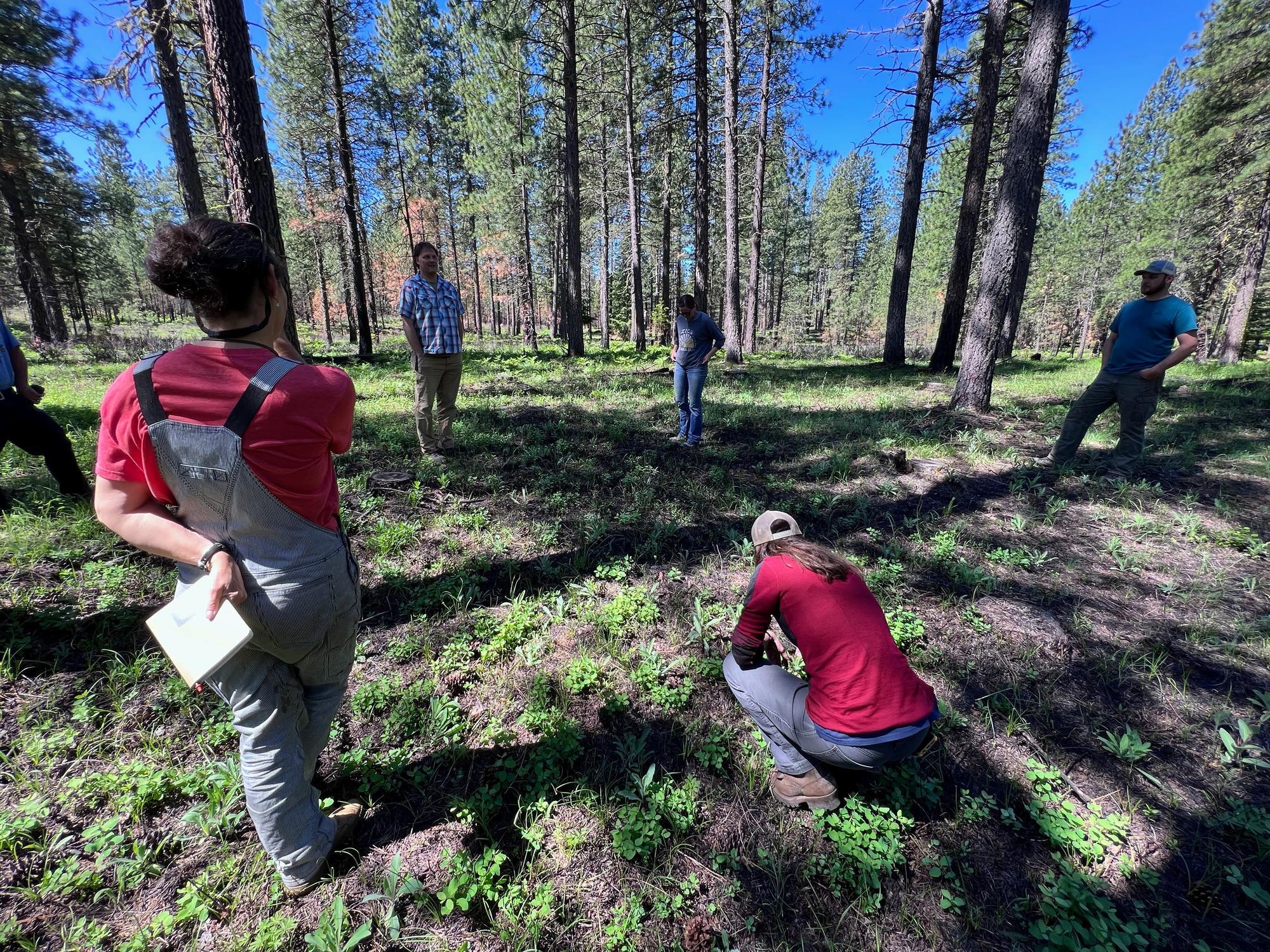Prescribed fires are used to achieve specific goals, such as fuels reduction, wildlife habitat improvement, and forest and grassland health. A burn plan outlines the desired outcomes (the objectives) of each burn and the conditions required to reach those objectives (the prescription). Monitoring and evaluation ensure that the burn plan is followed and its goals are met.
Monitoring helps ensure that the burn remains within the range of conditions established by the prescription. It also helps us understand how well the objectives were met. Tracking fire behavior, management actions during the burn, and the fire’s impacts helps us learn how weather, fuels (the vegetation that carries the fire) and other factors influenced the outcome. Over time, this creates a cycle that makes it possible to learn and improve practices for future burns.
Many methods exist to monitor the outcomes of a burn. Protocols depend on the objectives of the burn plan. They can vary from visual assessments to rigorous measurements and surveys. The first step is to establish the purpose of the monitoring program.
If the goal is fuels reduction, practitioners can use plots or transects to measure how much fuel is consumed. If wildlife habitat improvement is the goal, wildlife cameras can track the movement of species using the burned area, or land managers may measure important forage species in plots. Photos are an easy and quick way to create a record of a fire’s effects. Since monitoring can require substantial time and resources, burn planners focus on gathering and summarizing only the most useful information.
Monitoring happens in several steps — before, during and after the burn. Information collected before the burn helps to inform the burn plan and to understand initial conditions. During the burn, fire effects monitors report periodically to the burn boss. Their observations, when combined with information gathered after the burn, will help to tell the story of how fire behaved, the changes it created and any adjustments that could improve future burns. Some of fire’s effects may be visible immediately, while others can take several years.
Monitoring terms to know
- Char: The blackened area left by passing flames on the bottom of tree trunks. Higher char means higher fire intensity.
- Consumption: Fuels that burn during the fire are “consumed.” Practitioners describe the level of consumption for different aspects of fuel and vegetation, such as shrubs, dead wood, leaf litter and duff. Desired levels of consumption are often part of the burn plan.
- Mortality: How many shrubs or trees were killed by the fire. The intention is usually to cause some level of mortality, but the plan likely aims to spare bigger trees, for example.
- Resprouting: Fire sometimes kills the tops but not the roots of many broadleaf trees (such as oaks and madrones) and shrubs (such as hazel and elderberry). These plants will send up new shoots that can grow quickly. Resprouting can be desirable; it reinvigorates old shrubs and provides food for deer and elk. However, high levels of resprouting could mean that further maintenance will be required sooner due to the rapid regrowth.
- Scorch: Tree leaves or needles that are killed by rising heat rather than by flame contact. If there are a lot of fuels on the ground, heat could kill lower tree branches. On conifers, scorch can raise the height of the canopy and reduce the chances of a wildfire reaching it. But too much scorch can kill trees, so it’s important to monitor scorch levels. Some species like ponderosa pine can survive a high level of scorch.
Step 1: Before the burn
What are the fuel and ecological conditions where the burn
will take place?
Before the burn takes place, monitoring will focus on gathering information that will help track the effects of fire. Useful measurements will vary depending on the burn objectives but could include: tree density, shrub cover, fuel load and species composition. Burn monitors will compare this information to observations made after the burn to evaluate the success of the operation. This is also a good time to set up photo points to take matching pre-burn and post-burn photos.
Step 2: During the burn
Does the fire behavior match expectations?
Fire behavior is affected by factors like weather, fuel condition, topography and ignition patterns (Prescribed Fire: Fire Behavior, EM 9341, and Prescribed Fire: Ignition Techniques and Tools, EM 9387). The burn boss may appoint fire effects monitors, or FEMOs, to make frequent, detailed observations of changes in the weather. FEMOs also track fire behavior, including flame length, fuel consumption and tree scorching. If the fire is too hot or too cool, the burn boss may make immediate changes or they may call off the operation. FEMOs also look at what the smoke is doing and how it affects surrounding areas. They record the actions of the fire crew, such as changes that igniters make to firing patterns. These observations can inform future burns.
Step 3: After the burn, days to weeks
Were immediate objectives met?
Changes that are immediately visible after the burn are called “first-order fire effects.” The burn plan usually defines the desirable effects on fuels and live vegetation, such as the proportion of shrubs or small trees that are killed; the remaining depth of duff, needle or leaf scorch on trees; or the amount of litter (sticks, leaves and conifer needles) or grass consumed. Other measurements help determine how hot the fire was in different places: for example, the height of char on tree trunks. In addition to these changes, it is helpful to reflect on how well the burn went. Did everything go as planned? Were pre-burn preparations adequate? Did the burn result in any public comment or reaction? Could anything be improved next time?
Step 4: After the burn, weeks to months
Were short-term objectives met?
Not all effects of a burn are immediately apparent. Some aspects, like the level of crown scorch (tree leaves or needles killed by heat but not burned) are best seen a few weeks after the burn. Grasses and wildflowers may grow back within weeks. Seeds will germinate on the bare ground exposed by the fire, while plants that still have live roots will send up new sprouts. Within months, tree and shrub seedlings may start to grow.
Animals will return to burned areas almost immediately. Deer have been observed rolling in the ashes, presumably to get rid of parasites such as ticks and fleas. Later, they are drawn to the newly resprouting shrubs, which are higher in protein than unburned plants. Wildlife cameras can be useful to track how animals are responding to the burn.
Step 5: After the burn, months to years
Were long-term objectives met?
Some management objectives, such as tree mortality, may take even longer to evaluate. For example, fire in ponderosa pine forests may initially kill smaller trees and scorch the canopies of others. Trees that were previously weakened by disease or drought may take several years to die, while the surviving trees grow stronger from increased nutrients, soil moisture and light. A recently burned stand may look unhealthy because of scorched needles, but over time new needles will grow back, and trees will respond to the improved growing conditions. For these reasons, it may take three to five years to evaluate a burn’s benefits to tree vigor. Periodically revisiting an area can help track these changes over time and educate others about the role of fire.
Putting it all together
Monitoring helps improve prescribed burning by creating a record of conditions during and after the burn. It helps understand how to adapt burning techniques to better achieve the objectives of future burns. Because the objectives of prescribed burns are so varied, practitioners and landowners should tailor their monitoring protocols to their goals.
